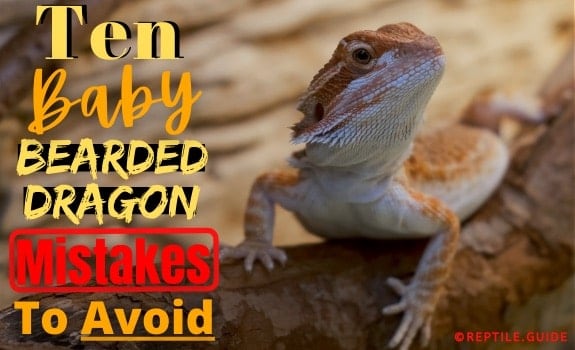
A Comprehensive Guide to Caring for Baby Bearded Dragons
Introduction
Bearded dragons, native to the arid regions of Australia, have become increasingly popular as exotic pets due to their docile nature, captivating appearance, and relatively low maintenance requirements. While adult bearded dragons are generally hardy and easy to care for, baby bearded dragons require specialized care to ensure their optimal growth and well-being. This comprehensive guide will provide detailed instructions on how to properly care for baby bearded dragons, covering all aspects of their husbandry, including housing, feeding, hydration, temperature and lighting, health monitoring, and socialization.
Housing
- Enclosure Size: Baby bearded dragons should be housed in an enclosure that is at least 20 gallons in size. As they grow, they will require a larger enclosure, with a minimum size of 40 gallons for adults.
- Substrate: The substrate, or bedding, should be loose and non-abrasive, such as reptile carpet, paper towels, or a mixture of sand and soil. Avoid using substrates that can be ingested, such as wood chips or gravel.
- Hiding Places: Provide multiple hiding places within the enclosure, such as caves, logs, or plants. This allows the baby bearded dragon to feel secure and reduce stress.
- Basking Area: Create a basking area within the enclosure using a heat lamp and a basking rock or platform. The basking area should maintain a temperature of 95-105°F (35-40°C).
- Cool Area: Provide a cool area within the enclosure where the baby bearded dragon can retreat to regulate its body temperature. The cool area should maintain a temperature of 75-85°F (24-29°C).
Feeding
- Diet: Baby bearded dragons are omnivorous and should be fed a diet consisting of live insects, leafy greens, and occasional fruits and vegetables.
- Insects: Live insects should constitute the majority of the diet and can include crickets, dubia roaches, mealworms, and waxworms. Dust insects with a calcium supplement before feeding.
- Leafy Greens: Offer a variety of leafy greens, such as collard greens, dandelion greens, and romaine lettuce. Greens should be washed thoroughly before feeding.
- Fruits and Vegetables: Fruits and vegetables can be offered as occasional treats and should be limited to small amounts. Suitable options include blueberries, strawberries, and sweet potatoes.
Hydration
- Water: Provide a shallow water dish within the enclosure at all times. Ensure the water is clean and fresh.
- Misting: Mist the enclosure lightly with water once or twice a day to increase humidity. Avoid over-misting, as this can lead to respiratory problems.
Temperature and Lighting
- Temperature Gradient: Maintain a temperature gradient within the enclosure, with a basking area of 95-105°F (35-40°C) and a cool area of 75-85°F (24-29°C).
- Heat Lamp: Use a heat lamp to create the basking area. Ensure the lamp is positioned securely and does not pose a fire hazard.
- UVB Lighting: Provide UVB lighting for 10-12 hours per day. UVB rays are essential for calcium absorption and bone development. Use a UVB bulb specifically designed for reptiles.
Health Monitoring
- Regular Checkups: Schedule regular checkups with a veterinarian experienced in reptile care.
- Signs of Illness: Monitor your baby bearded dragon for any signs of illness, such as lethargy, loss of appetite, diarrhea, or respiratory problems.
- Parasites: Baby bearded dragons are susceptible to parasites. Regular fecal exams are recommended to detect and treat any parasites.
- Metabolic Bone Disease: Metabolic bone disease (MBD) is a common condition in baby bearded dragons caused by a deficiency of calcium and vitamin D3. Ensure your dragon is receiving adequate calcium and UVB lighting to prevent MBD.
Socialization
- Handling: Handle your baby bearded dragon gently and regularly to socialize it. Start with short sessions and gradually increase the duration as the dragon becomes more comfortable.
- Avoid Stress: Minimize stress by providing a calm and quiet environment. Avoid sudden movements or loud noises.
- Companionship: Baby bearded dragons can be kept in pairs or small groups, provided they are of similar size and temperament.
Additional Tips
- Quarantine: Quarantine new baby bearded dragons for 30 days before introducing them to other reptiles.
- Supplements: Dust insects with a calcium supplement and provide a cuttlebone or calcium block for additional calcium intake.
- Bathing: Bathe your baby bearded dragon in warm water once or twice a month to remove dirt and shed skin.
- Shedding: Baby bearded dragons shed their skin regularly. Provide a humid environment during shedding to facilitate the process.
- Brumation: Baby bearded dragons may brumate, or go into a state of dormancy, during the winter months. Reduce feeding and lighting during this period.
Conclusion
Caring for baby bearded dragons requires attention to detail and a commitment to providing a healthy and stimulating environment. By following the guidelines outlined in this comprehensive guide, you can ensure that your baby bearded dragon thrives and brings you years of enjoyment. Remember to consult with a veterinarian experienced in reptile care for any specific questions or concerns.
